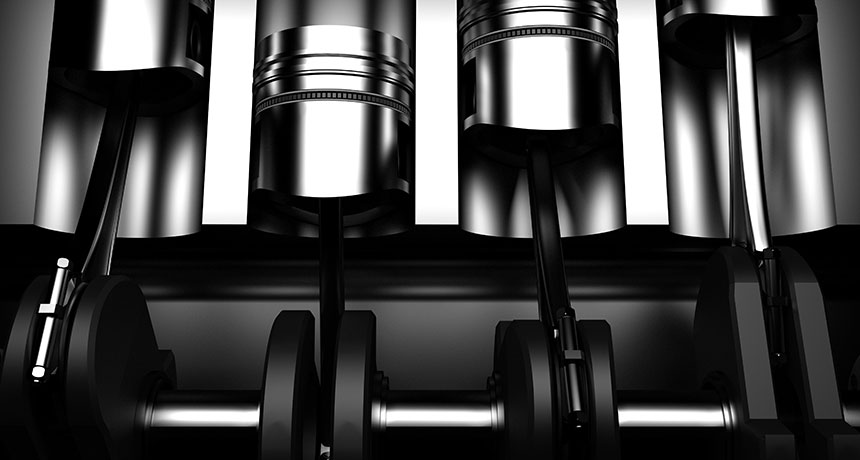
To evade friction, try taking a quantum shortcut.
Two teams of physicists are building tiny machines designed to operate with the maximum possible efficiency. According to thermodynamics, there’s an ultimate limit to the efficiency of machines known as heat engines — including steam engines and car engines — which convert heat into motion or other types of energy. But real-world engines never reach that maximum efficiency, and often run well below it, because they lose energy to friction.
Now, quantum experiments are circumventing the limitations imposed by friction using specially designed shortcuts. Physicists Adolfo del Campo and Roberto Serra described two separate experiments June 25 and June 28 at the Quantum Thermodynamics meeting at the Kavli Institute for Theoretical Physics at the University of California, Santa Barbara.
The shortcuts are “a kind of quantum lubricant,” says Serra, of the Federal University of ABC in Santo André, Brazil. Similar to the way that oil can decrease friction in a standard engine, these shortcuts eliminate the friction that is present on quantum scales.
Heat engines operate by cycling through a series of steps. For example, a car engine’s cylinders execute a sequence that includes intake of fuel and air, compression, combustion, expansion and release of exhaust.
Normally, to avoid friction, it would be necessary to run these steps very slowly. Such a limitation results in a trade-off, increasing the efficiency of a machine, but decreasing its power, the amount of energy transferred in a given amount of time. “The idea of shortcuts is to have both simultaneously,” says physicist Masahito Ueda of the University of Tokyo, who was not involved with the research.
Del Campo and colleagues report first steps toward a simple frictionless engine, composed of a cloud of chilled lithium atoms, which expands and contracts in a way reminiscent of a car engine’s piston. To avoid friction, the researchers carefully controlled the cloud, allowing it to expand slowly at first and then speed up before slowing again. The technique results in frictionless operation, the researchers reported in a paper published April 27 in Science Advances.
“In principle, what this allows you is to have the best use of your energy resources,” says del Campo, of the University of Massachusetts Boston. To complete the engine’s cycle, del Campo and colleagues must also find ways to heat and cool the cloud, which future work will focus on.
Using very different technology based on the energy levels of carbon nuclei in molecules of chloroform, Serra and colleagues created another type of frictionless quantum engine. Thanks to a quantum property called spin, the nuclei are magnetic. When placed in a magnetic field, that results in two possible energy levels for the carbon nuclei — one in which the magnetic pole aligns with the field, and one in which it points in the opposite direction. Instead of a physical expansion and contraction, Serra and colleagues increased and decreased the magnetic field, which changed the separation between energy levels.
If Serra and colleagues operated the engine too quickly, friction drove its efficiency to zero. But by tweaking the oscillations of the magnetic fields applied to the molecules, the researchers eliminated friction and the machine reached an optimal efficiency of around 40 percent, Serra reported. Car engines, for comparison, typically run at around 20 percent efficiency.
Designing shortcuts isn’t easy, and the technique works only for quantum systems that can be precisely controlled. The researchers can’t yet use the engines for any useful process — any applications are far in the future. But such technology eventually might be harnessed to make efficient miniature refrigerators, for example to cool quantum computers.

